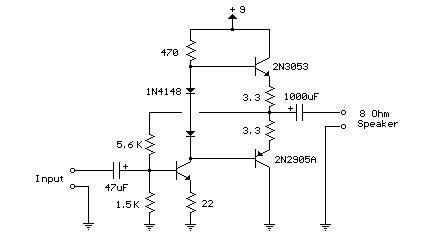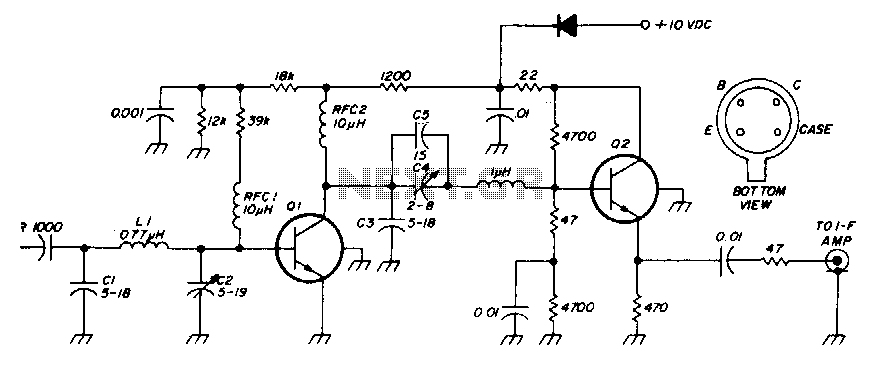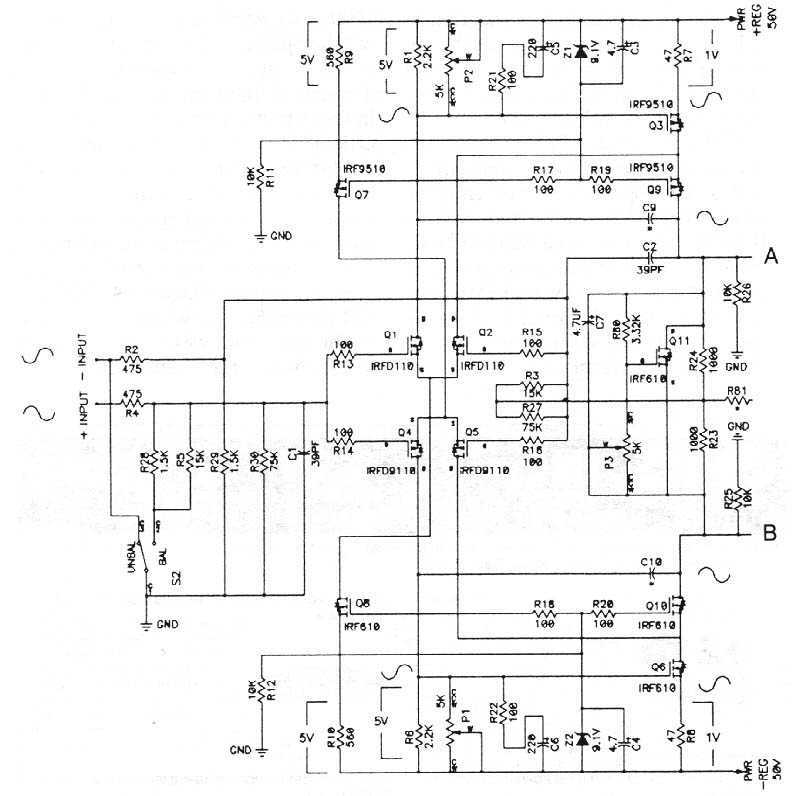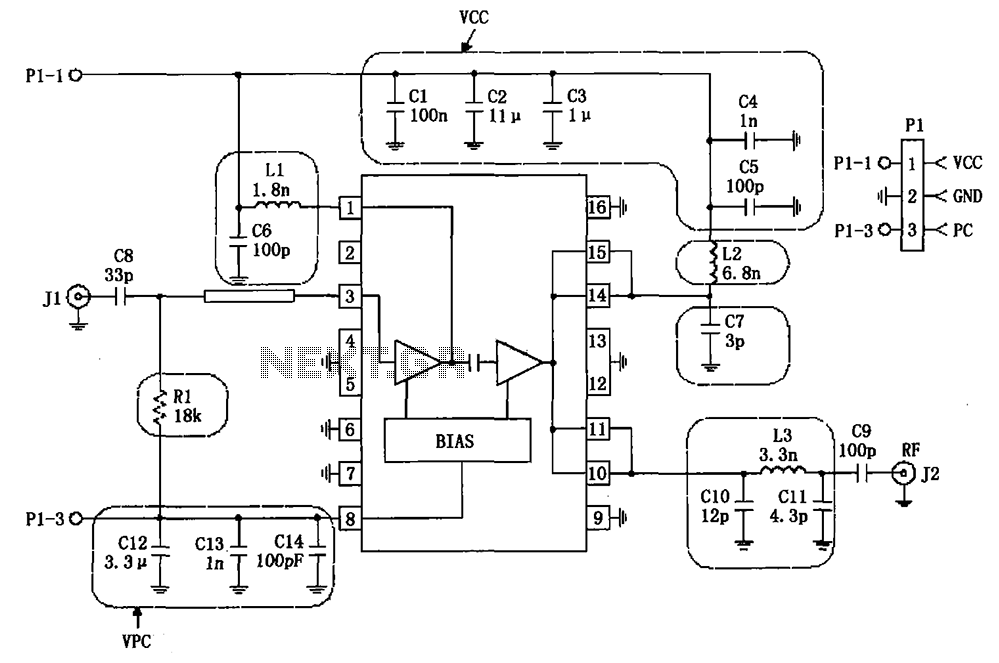
10w audio amplifier
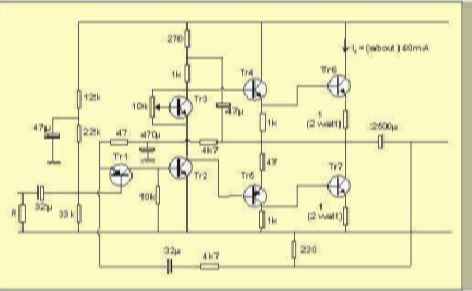
The table below illustrates the expected voltages when utilizing a 24V supply, with the variable resistor adjusted to provide an output current of approximately 40mA.
The circuit operates with a 24V DC power supply, where a variable resistor (also known as a potentiometer) is employed to control the current flowing through the output stage. The output stage is designed to deliver a current of about 40mA, which is a critical parameter for ensuring the proper operation of connected components, such as LEDs or other low-power devices.
In this configuration, the variable resistor allows for fine-tuning of the output current by altering the resistance in the circuit. As the resistance is adjusted, the voltage drop across the variable resistor changes, which in turn affects the voltage present at the output. This relationship can be described by Ohm's Law (V = IR), where the voltage (V) across the resistor is equal to the current (I) flowing through it multiplied by the resistance (R).
It is essential to monitor the voltages at various points in the circuit to ensure that they remain within acceptable limits, particularly when the variable resistor is adjusted. The expected voltages can be tabulated based on the resistance settings of the variable resistor, providing a clear reference for users to understand how the adjustments will influence the output current and voltage.
In practical applications, this circuit can be utilized in various electronic devices where precise current control is required, such as in lighting applications, motor speed control, or audio signal processing. Proper design considerations should be taken into account, including the power ratings of the components used and the thermal management of the circuit to prevent overheating during operation.The table below shows the approximate voltages to be expected when using a 24v supply and with the variable resistor set to give a current of about 40mA in the output stage. 🔗 External reference
The circuit operates with a 24V DC power supply, where a variable resistor (also known as a potentiometer) is employed to control the current flowing through the output stage. The output stage is designed to deliver a current of about 40mA, which is a critical parameter for ensuring the proper operation of connected components, such as LEDs or other low-power devices.
In this configuration, the variable resistor allows for fine-tuning of the output current by altering the resistance in the circuit. As the resistance is adjusted, the voltage drop across the variable resistor changes, which in turn affects the voltage present at the output. This relationship can be described by Ohm's Law (V = IR), where the voltage (V) across the resistor is equal to the current (I) flowing through it multiplied by the resistance (R).
It is essential to monitor the voltages at various points in the circuit to ensure that they remain within acceptable limits, particularly when the variable resistor is adjusted. The expected voltages can be tabulated based on the resistance settings of the variable resistor, providing a clear reference for users to understand how the adjustments will influence the output current and voltage.
In practical applications, this circuit can be utilized in various electronic devices where precise current control is required, such as in lighting applications, motor speed control, or audio signal processing. Proper design considerations should be taken into account, including the power ratings of the components used and the thermal management of the circuit to prevent overheating during operation.The table below shows the approximate voltages to be expected when using a 24v supply and with the variable resistor set to give a current of about 40mA in the output stage. 🔗 External reference

